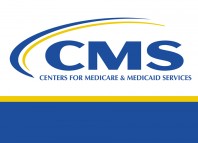ODP Proposed Heightened Scrutiny Information for Residential Services Locations
Office of Developmental Programs (ODP) Announcement 20-002 requests comments regarding Proposed Heightened Scrutiny Information for Residential Services locations. Comments are being sought on attachments #1–#3 until 11:59 pm on Monday, February 17, 2020.
To be compliant with the Centers for Medicare and Medicaid Services (CMS) Home and Community-Based Settings (HCBS) rule, ODP must identify and complete onsite reviews of all service locations that are presumed to have the qualities of an institution. The purpose of these onsite reviews will be to determine whether each service location can overcome the institutional presumption by either showing proof that the requirements contained in the CMS HCBS rule are currently met, or by ensuring the requirements will be met within a timeframe specified by ODP (but no later than March of 2022).
If ODP determines that the service location does not currently meet the requirements but has a plan to meet them within the timeframe specified by ODP, the service location must be submitted to CMS for a heightened scrutiny review. CMS will then determine whether the service location has the qualities of a home and community-based setting and does not have institutional qualities.
Homes that are identified as one of the following will require an onsite heightened scrutiny review by ODP due to having the potential of isolating individuals living in the home from the broader community:
- Farmstead – These settings are often in rural areas on large parcels of land, with little ability to access the broader community outside the farm. Individuals who live at the farm typically interact primarily with people with disabilities and staff who work with those individuals. Individuals typically live in homes only with other people with disabilities and/or staff. Their neighbors are other individuals with disabilities or staff who work with those individuals. Daily activities are typically designed to take place onsite so that an individual generally does not leave the farm to access HCBS or participate in community activities. For example, these settings will often provide a place onsite to receive clinical (medical and/or behavioral health) services, day services, places to shop and attend church services, as well as social activities where individuals on the farm engage with others on the farm, all of whom are receiving Medicaid HCBS. While sometimes people from the broader community may come onsite, people from the farm do not go out into the broader community as part of their daily life. Thus, the setting does not facilitate individuals integrating into the greater community and has characteristics that isolate individuals receiving Medicaid HCBS from individuals not receiving Medicaid HCBS.
- Gated Community – These settings typically consist primarily of people with disabilities and the staff that work with them. Often, these locations will provide residential, behavioral health, day services, social and recreational activities, and long-term services and supports all within the gated community. Individuals receiving HCBS in this type of setting often do not leave the grounds of the gated community in order to access activities or services in the broader community. Thus, the setting typically does not afford individuals the opportunity to fully engage in community life and choose activities, services and providers that will optimize integration into the broader community.
* Campus – These settings have multiple co-located and operationally related (i.e., operated and controlled by the same provider) service locations/homes/facilities that congregate a large number of people with disabilities together and provide for significant shared programming and staff, such that people’s ability to interact with the broader community is limited. This could include group homes on the grounds of a private Intermediate Care Facility (ICF) or numerous group homes co-located on a single site or in close proximity (multiple units on the same street or a court, for example).
More information published by CMS on the HCBS rule, including heightened scrutiny requirements, can be found here. Attachment 1 lists locations requiring an onsite heightened scrutiny review from ODP. Attachment 2 and Attachment 3 are the proposed tools for evaluating and reviewing the listed sites. Questions pertaining to this announcement and accompanying attachments may be directed to this email.










